5/12/1864 - Shot by a retreating, dismounted Michigan horseman during the Union victory at the Battle of Yellow Tavern, Confederate cavalry commander James Ewell Brown "Jeb" Stuart (he is also known by the nicknames "Beauty" and "Knight of the Golden Spurs"), dies at the Richmond, Virginia home of his brother-in-law, Dr. Charles Brewer. The southern beloved cavalier is only 31 years old at his passing (he will be replaced by one of his subordinates, Brigadier General Wade Hampton III).
Stuart
Of Scottish descent, Stuart is born at the Laurel Hill Farm plantation in Patrick County, Virginia (near the state's border with North Carolina) on February 6, 1833. The eighth of eleven children, he is the son of Archibald Stuart, a War of 1812 veteran, attorney, slaveholder, and Democratic politician (he will represent Patrick County in both houses of the Virginia Assembly and also serve as a state representative in the United States House of Representatives) and Elizabeth Letcher Pannill Stuart, a strict religious mother who runs the family farm. His great-grandfather, Alexander Stuart, commands a regiment during the American Revolution Battle of Guilford House, the 1781 clash that pushes Lieutenant General Charles Cornwallis out of North Carolina and starts the British on the road to eventual defeat at the Battle of Yorktown in October of the same year.
Laurel Hill Farm - 2017
Archibald
Until the age of twelve, Stuart is educated at his home by his mother and a selection of tutors. The next stage of his schooling takes place in Wytheville, Virginia, and in the town of Danville, at the home of his aunt Anne (his father's sister) and her husband (Stuart's namesake), Judge James Ewell Brown. At the age of fifteen he enters Emory and Henry College, and attends the institution from 1848 to 1850 (in 1848, he attempts to enlist in the United States Army, but is rejected for being woefully underage). In 1850 Stuart obtains an appointment to the United States Military Academy at West Point, New York, from his father's political rival, Representative Thomas Hamlet Averett, becoming a member of the fabled class of 1854 that will include eleven future colonels and ten generals that will fight against each other during the Civil War (of the 46 men that graduate from West Point in 1854, 37 will serve in either the Union or Confederate Army, where 12 will die ... first in the class is future major general George Washington Custiss Lee, the eldest son of the academy's 1852-1854 Superintendent, Robert E. Lee). Sarcastically nicknamed "Beauty" because he is thought to not be handsome during his teenage years, Stuart is well liked by the members of his class and graduates 13th in his year, ranking 29th in engineering (his poor drawing skills prevent him from achieving a higher standing) and 10th in cavalry tactics, also gaining the rank of second captain of the corps, while also being one of eight cadets designated honorary "cavalry officers" for showing exceptional horsemanship skills. Equally important to Stuart gaining a military education will be the horseman's introduction to Lee and his family as he becomes a friend of the Lees (Fitzhugh Lee, Robert's nephew becomes a West Point cadet in 1852) and frequently joins the family at social occasions.
The Class Of 1854
Stuart's Class Ring
Graduating from West Point, Stuart begins his military career as a brevet second lieutenant assigned to the U.S. Regiment of Mounted Riflemen stationed in Texas. Assigned to Fort Davis, for three months in 1855, he leads scouting missions over the road leading from San Antonio to El Paso. Later in 1855, he is transferred to the newly formed 1st Cavalry Regiment stationed at Fort Leavenworth, Kansas Territory. There, under the command of Colonel Edwin V. Sumner (a future United States Major General during the Civil War), he becomes the regimental quartermaster and commissary officer. And capping off his busy year (back in Virginia, his father dies on 9/20/1855 at the age of 59), in a less than two month whirlwind, he meets, falls in love with, and marries Flora Cooke (a 34-inch by 34-inch Confederate flag sewn by Flora for Stuart to use while in the field is sold by auction for $956,000 in 2006, a world record price for any Confederate flag), the daughter of the commander of the 2nd U.S. Dragoon Regiment, Virginian Lieutenant Colonel Philip St. George Cooke (the couple will have three children, the first, a daughter that dies on the day she is born in 1856, another daughter, Flora, named after her mother in 1857, and a boy, first named Philip St. George for Stuart's father-in-law, that is renamed James Ewell Brown Stuart, Jr. when senior becomes disgusted when Flora's father decides to remain in the Union Army at the beginning of the Civil War ... discussing the matter with his brother-in-law, future Confederate Brigadier General John Rogers Cooke, Stuart will say of his father-in-law's decision, "He will regret it but once, and that will be continuously.").
Flora
One of the most volatile regions in the United States before the Civil War finally begins (with cause known as "Bleeding Kansas"), Stuart's assignment to Kansas finds the horseman trying to keep the peace between battling anti-slavery and pro-slavery (the Stuart's will own two slaves, one inherited from Jeb's father's estate and one purchased) elements trying to gain control of the state, and with Plains Indians trying to prevent the government's westward expansion into their territory. Demonstrating his leadership abilities and taking the first battle wound of his career, on July 29, 1857 at the Solomon River in Kansas, Stuart will lead a charge against a small band of Cheyenne that scatters the warriors, but results in a bullet wound to the first lieutenant's chest (luckily for Stuart, he is shot with an old-fashioned pistol and the hit barely penetrates his skin). During this period, in October of 1859, Stuart also receives American patent #25,684 for his invention of an improved method of attaching sabers to belts with a hook (the government will pay Stuart $5,000, a sum worth $181,828.92 in 2023, for the rights to use his creation). Back on the east coast in 1859 to oversee the manufacture of his saber hook by Knorr, Nece and Company of Philadelphia, discuss government contracts, and apply for a position to the quartermaster department, Stuart has his plans disrupted when he hears of John Brown's raid on the U.S. Arsenal at Harper's Ferry, and volunteers to be the aide-de-camp of the man given the responsibility of ending the insurrection against the government, Colonel Robert E. Lee. Duty accepted, Lee will have Stuart, carrying a white flag, deliver to Brown his demands for the latter's surrender, and when those terms are refused, it will be Stuart who waves his hat, signaling Lt. Israel Greene's small command of Marines (11 sergeants, 13 corporals, 81 privates, 1 bugler, armed with 7 howitzers) to begin the attack on the abolitionist and his men that ends the clash (found guilty of murder, inciting a slave insurrection, and treason against the Commonwealth of Virginia, Brown will be hung before a crowd of over 2,000 witnesses that includes, Robert E. Lee, Thomas "Stonewall" Jackson, future Lincoln assassin, John Wilkes Booth, and the poet, Walt Whitman). Though promoted to captain, with the shelling of Fort Sumter and Virginia's secession from the Union, Stuart resigns from the U.S. Army and joins the Confederate Army as a lieutenant colonel of Virginia infantry in May of 1861.
The Shelling Of Fort Sumter
Stuart
In the three years he has left to live, Stuart becomes one of the most beloved and controversial Southern military figures of the Civil War. Ordered to report to Colonel Thomas Jackson (not yet a "Stonewall") by the new commander of the armed forces of Virginia, Major General Robert E. Lee, Stuart reports for duty on July 4, 1861, and is quite happy when Jackson immediately switches him from the infantry to the cavalry, putting him the rider in charge of the newly organized 1st Virginia Regiment. On July 16th, he is promoted to full colonel, and as such, he participates in chasing the broken Federal troops as they flee back into Washington D.C. after losing the First Battle of Bull Run. In charge of the Confederate's outposts along the upper Potomac River, he is given command of a cavalry brigade in the Army of the Potomac (the command that will soon be known as the Army of Northern Virginia) and promoted to brigadier general on September 24, 1861. In the Peninsula Campaign of 1862 in which Major George B. McClellan and his command of 41,000, trying to reach the Confederate capital of Richmond, fight a series of battles against General Joseph Johnston's 32,000 Confederates, Stuart and his horsemen first help the southern army to successful withdraw to better defensive positions at the Battle of Williamsburg, before becoming a southern celebrity when Robert E. Lee takes over command of the army from a wounded Johnston following the Battle of Fair Oaks. New to the field command and needing information on his foe, Lee orders Stuart to perform a reconnaissance to determine if McClellan's right flank is vulnerable. Setting out on the morning of June 12, 1862 with 1,200 troopers to get Lee his requested information, Stuart and his command determine that the flank is indeed vulnerable, and get the information back to the general by riding completely around the Union army, a journey of 150 miles in which the southern cavalry loses only one man while capturing 165 Federals, 260 horses and mules, and a healthy variety of quartermaster and ordinance supplies, completing humiliating the Union cavalry of his father-in-law, Colonel Cooke.
Don Troiani Painting - Stuart (Center With Sword Raised)
Charging At First Bull Run
On The Circle Ride
Cultivating his role as a cavalier of the South by wearing a red-lined cape, wrapping the yellow waist sash of a regular in the cavalry about his midsection, sporting a hat cocked to the side set off by an ostrich plume, with a red rose in his lapel, golden spurs upon his boots, and often smelling of cologne, "The Ride" establishes Stuart as one of Lee's favorite officers, the eyes and ears of his army, and makes the horseman a sudden Confederate celebrity that upon his return to Richmond is greeted by cheering crowds throwing flower petals into his path (among the quirks of Stuart that the Southern command puts up with are the horseman attaching to his staff a banjo player, that provides music for the general with the assistance of two fiddlers and a servant that rattles bones for percussion, having his own reverend on his staff, Major Dabney Ball, employing a giant Prussian cavalryman, 6'3", 250 pound, Johann August Heinrich Heros von Borcke as a bodyguard, and having a mean racoon pet serve as a watchdog). Honored for his role in circling the Federals, and an integral part of Lee's Northern Virginia Campaign to defeat the Union Army of the Potomac, now commanded by Major General John Pope, Stuart is promoted to Major General on July 25, 1862 and his command is upgraded to Army of Northern Virginia's Cavalry Division. Burnishing his growing reputation for derring-do, he is almost captured and loses his plumed hat and cape leading a raid against his northern opponents in August of 1862 (he escapes by jumping his horse, Virginia, over a large ditch that the Federals pursuing him are forced to go around ... two other favorite mounts are named Skylark and Lady Margaret), which he turns around the next day by launching a retaliatory strike into Pope's rear at Catlett's Station, the general's headquarters, a success in which Stuart comes away with Pope's full uniform (which the horseman is willing to trade for his lost hat, but instead gives to Virginia's governor, John Lechter, who puts it on display for the public in Richmond when the offered swap is ignored) and important dispatches concerning the Union commander's movements and available reinforcements ... information which Lee will use to set off the Second Battle of Bull Run.
At the Confederate victory at Second Bull Run (8/28/1862 to 8/30/1862), Stuart's cavalry supports the flank of Major General James Longstreet's command when it launches a five division attack (25,000 men) on Pope's left flank that sends the defeated Union army back across the waters of Bull Run. Though unable to cut off the Union retreat at Lewis's Ford due to the superior numbers of his foe, Stuart's men are able to capture over 300 Northern horsemen of Brigadier General John Buford. Nipping at various Federal commands through the Battle of Chantilly (9/1/1862), the southern cavalry helps push Pope's army back into Washington D.C., helping open up Maryland for Lee's invasion of the state and Pope's removal from command. During the Confederates' September Maryland campaign, when Lee splits his army into four parts, Stuart's thinly spread horsemen, along with a division of infantry, guard the rear of the Army of Northern Virginia at South Mountain, the continuation of the Blue Ridge Mountains after they enter Maryland, and a natural obstacle separating the Cumberland and Shenandoah Valleys. He receives his first criticism for not providing information to Lee about the Union army drawing near his fragmented command (the Army of the Potomac now commanded by General George B. McClellan, who has found out Lee's plans when Corporal Barton Mitchell of the 27th Indiana Infantry discovers the southern commander's Special Order 191 by the side of a Maryland road, wrapped around three cigars) while busy resting his men for five days and putting on a gala ball for his command and the local citizenry of the town of Urbana. Back in action at the still bloodiest single day in American history at the Battle of Antietam (the two sides combined suffer a total of 22,727, of which 3,675 soldiers are killed in action on 9/17/1862), Stuart's horse artillery bombards the Union's flank as McClellan opens the day with a bloody attack across a region that will become known in American military history as simply, "The Cornfield." Ordered by Stonewall Jackson to circle his cavalry around the Union's right flank and rear, the movement is called off in the late afternoon when probing for a weak spot with his mobile artillery, "murderous" counterfire from Northern guns ends the cavalry's attack before it even begins. A horrible draw that forces Lee to retreat back into Virginia, three weeks later, for 60 hours stretched over October 10th, 11th, and 12th, Stuart leads his men (1,800 men and four light cannons) on another circumnavigation of the Union command, this time a 126 mile ride and raid that sweeps west to Darkesville, West Virginia, north to the Pennsylvania communities of Mercersburg and Chambersburg, east to Emmitsburg, Maryland, and then south through Hyattstown, Maryland, across the Potomac at the village of White's Ford and back into Virginia at Leesburg. The North embarrassed again by Stuart's horsemen, the general is widely praised again in the South for a ride that secures fresh mounts for Lee's men, along with mules, arms and supplies, destroys railroad track, buildings, and equipment near Chambersburg, results in the capture and parole (for release of an equal number of Confederate prisoners) of 30 civilian officials and 280 convalescing Federal soldiers, gathers important information on the position of Northern troops, and contributes to President Lincoln replacing McClellan with Major General Ambrose Burnside. Sadly, while providing a screen for the movements of Major General James Longstreet's Corps and skirmishing with Union cavalry and infantry in early November at Mountville, Aldie, and Upperville, Stuart receives a telegram from his wife stating their four-year-old daughter has died of typhoid fever just a few days short of her fifth birthday.
Union Soldiers Attacking Through The Cornfield
Around The Union Army Again
Daughter Flora
No time for extended mourning with the Civil War raging in northern Virginia, Stuart is back in action in December, just in time for his command to protect Stonewall Jackson's flank at Hamilton's Crossing during the Southern Battle of Fredericksburg victory (12/11/1862 to 12/15/1862). After Christmas, Stuart is in the saddle again, ordered by Lee to launch a raid north of the Rappahannock River to ascertain the positions and movements of the Army of the Potomac, and inflict as much damage as possible to the enemy. Though not a circle ride, the raid (once more 1,800 men and a battery of horse artillery) extends north to four miles short of Fairfax Court Horse, Virginia, gains the information Lee is seeking, along with more mounts, mules, supplies, and ammunition for the South, and again causes humiliation for the armed forces of the Union (tapping into telegraph lines being used by the North, Stuart will intercept messages sent between Union commanders, and Stuart will himself send off a signal to the Union's Quartermaster General, Montgomery C. Meigs, requesting the general "... will in the future please furnish better mules, those you have furnished recently are very inferior." At the Battle of Kelly's Ford (3/17/ 1863), Stuart's command blunts a Northern cavalry raid across the Rappahannock by 2,200 troopers of Brigadier General William W. Averell, but for the first time retreat before an advance of Union cavalry, and lose the leader of their horse artillery, 24-year-old Major John Pelham (a recent resignee from West Point, Lee will call him "Gallant" Pelham and Stuart will sorrow over the death of his gunner and friend, eventually naming the daughter that is born to him on October 9, 1863, Virginia Pelham Stuart) when leading troops forward, the officer has a shell go off over his head that sends a lethal splinter of shrapnel into his brain.
Pelham
The Battle of Chancellorsville (4/30/1863 - 5/6/1863) affords Stuart an opportunity to have what many military historians consider his finest moments of the war, which in turn sets up what might be considered his worst. When Lee defies military logic and splits his command in the face of a superior numbered army so that a surprise flank attack by Lt. General Stonewall Jackson can fall on the Army of the Potomac and it's newest commander, Major General Joseph Hooker, Stuart's command is part of the South's famous 12-mile flanking march that lands a devastating blow on the Union's XI Corps. His cavalry in the process of pursuing retreating Federals, when Jackson and his second-in-command Major General A. P. Hill, are both wounded (shot by mistake by his own men, Jackson's wounds will prove to be mortal when he develops pneumonia as a result and dies on 5/10/1863 at the age of 39), Stuart shifts fairly flawlessly from being a cavalry commander to taking over the infantry leadership of Jackson's Corps, and it is Stuart who will continue the assaults that eventually send Hooker back across the Rappahannock River. Flush with victory and back with his horsemen as Lee readies his command for an offensive into the North, Stuart gets permission to stage a June 5th grand review of his troopers (9,000 mounted men) and four batteries of field artillery. The parade missed by Lee, Stuart puts on a second performance for the general and the Virginia citizens of the Culpepper region (sans the faux battle) three days later, then bivouacs his tired command at Brandy Station prior to it's launching a screening raid over the Rappahannock River. Caught up in the strutting about though, the Southern horsemen, the author's of so many surprises on Federal forces since 1861, are themselves stunned when on June 9th, they are suddenly struck in the morning by the Cavalry Corps of the Army of the Potomac (roughly 11,000 men, including an infantry brigade of 3,000) commanded by Major General Alfred Pleasonton. The largest clash of mounted troops in the war, the back-and-forth Battle of Brandy Station lasts ten hours and ends in a draw at sunset (the successful defense of Stuart's headquarters atop Fleetwood Hill is crucial in the battle) when the frustrated Federals cross back over the Rappahannock, but is also the end of Stuart's domination of the Union cavalry. Criticism received for needlessly tiring out his troops, being surprised and almost losing the battle, ego ruffled, seeking to assuage the bitter of Brandy Station, Stuart uses Lee's orders to screen the Army of Northern Virginia's march into Pennsylvania as permission to launch yet another ride around the Northern Army, this time a three brigade jaunt that lasts from June 25th to July 2nd (boats of the Chesapeake and Ohio Canal are captured and their cargo are plundered, miles of telegraph wires are torn down, Northern horsemen from Delaware are chased into Baltimore, 140 brand new, fully loaded wagons containing hay, bread, bacon, crackers, and ammunition, and their mule teams, become property of the Confederates at Rockville, Maryland, the Pennsylvania town of Carlisle is shelled, and almost 400 Union soldiers are taken and then paroled) and results in Lee, lacking his usual Stuart information on enemy troop movements, to stumble into the three day (7/1/1863 to 7/3/1863), turning point (the largest military clash to ever take place in North America, a tussle between over 175,000 men that will result in a butcher's bill of over 60,000 American casualties), Battle of Gettysburg.
Mort Kunstler Painting - Stuart's Grand Review
Brandy Station
Finally able to link up with the Second Corps of Lt. General Richard S. Ewell (Stonewall Jackson's command replacement) on July 2nd, Stuart reports to Lee and is rebuked by the commander for leaving the Army of Northern Virginia in the dark for over a week, but forgiven by his mentor and friend. Given the assignment of guarding the Confederate's left while striking the right flank of the Federal army (now commanded by Major General George Meade), on the final day of Gettysburg, Stuart and three brigades of his cavalry attempt to fall on the rear of the Union army as Pickett's Charge hits the Federal front. A potential Union disaster, Stuart's attack on the Federals (6,000 of his Southerners against Northern cavalry numbering about 3,000 troopers) at East Cavalry Field is blunted in a series of brutal frontal clashes with the Michigan horsemen (many armed with new repeating rifles) of 24-year-old Brigadier General George Armstrong Custer (who personally leads his men into battle yelling, "Come on, you Wolverines!) and troopers belonging to Colonel John Baillie McIntosh (men for the most part from New Jersey and Pennsylvania belonging to the command of Brigadier General David Gregg). The Battle of Gettysburg finally lost with Lee's failure to break Meade's line of defense on the final day of the clash, Stuart's fatigued men (clashing with militia and Northern soldiers, they have been in the saddle for nine days) next receive the task of covering Lee's retreat and keeping Meade's army at bay, a job they accomplish (assisted by the inclement weather) skirmishing almost daily as they become the last of Lee's army to cross the swollen Potomac River and successfully reach the relative safety of Virginia on July 14, 1863.
Clash At The East Cavalry Field
Stuart
In September of 1863, still licking the wounds his army received at Gettysburg, Lee reorganizes his horsemen into a Cavalry Corps under Stuart consisting of two divisions of three brigades each, divisions commanded by Major General Wade Hampton and Major General Fitzhugh Lee (many see Lee's failure to promote Stuart to Lt. General as yet another rebuke of his cavalry commander for his performance at Gettysburg, but Lee never confirms that is the cause). The autumn and winter of the year are spent in camp, launching raids against Meade's army, acquiring movement information on the Army of the Potomac, and covering Lee's maneuvers, with clashes with Union troops at the First Battle of Auburn (10/13/1863), the Second Battle of Auburn (10/14/1863), a success ambush on the Union cavalry of Brigadier General Judson Kilpatrick that will come to be known as "The Buckland Races" (10/19/1863), and the Battle of Mine Run (11/27/1863 to 12/2/1863), before going into winter quarters at the end of December. A command structure finally suited to defeating the Confederate Army, the new Northern leadership team of Lt. General Ulysses S. Grant directing the movements of Major General George G. Meade's Army of the Potomac (and other Northern land forces), begins it's spring offensive of 1864, known as the Overland Campaign, providing its usual cavalry services to Lee at The Battle of the Wilderness (May 5, 1864 to May 7, 1864), an inconclusive bloody clash of positioning on the site of the previous year's Battle of Chancellorsville in the dense forests of northern Virginia that causes another 28,000 casualties to the armies of the North and South (Grant, 17,666 casualties, Lee, 11,033 casualties). Afterwards, arguing about how the Union cavalry (now commanded by Major General Philip Henry Sheridan ... a military savant that has gone from captain to Major General in six months, brought east from the Army of the Cumberland) was mishandled during the battle by being kept in it's traditional role of providing screening and reconnaissance by Meade, Grant hears of Sheridan's claims that if turned loose he can best Stuart, and okays his subordinate's plans for a raid on Stuart's command. Turning southeast to move behind Lee's army, hoping to draw Stuart's cavalry into battle (4,500 men), Sheridan launches a 12,000 trooper raiding party (three divisions of troopers under the command of Brigadier Generals Wesley Merritt, David M. Gregg, and James H. Wilson, supported by 32 artillery pieces, at the Army of Northern Virginia's Beaver Dam supply station on May 9, 1864, a horse sortie with Sheridan's command, riding four abreast towards Richmond, stretching out over 13-miles along Virginia's road system that will lead to the Battle of Yellow Tavern, and culminates in Stuart's mortal wounding.
Kilpatrick
Sheridan
Begun with a bang as the Union cavalry takes Beaver Dam Station, where Sheridan's horsemen set fire to over a hundred railway cars and two locomotives of the Virginia Central Railroad, while also finishing the destruction of close to a million rations of meat (the air for miles around the depot will smell of crisped bacon) and half a million portions of bread (a three-week supply of rations), do away with all of the medical supplies meant for Lee's army, liberate 378 Federal prisoners captured at the Wilderness, and tear up ten miles of railroad tracks and telegraph lines ... just the sort of pillage Sheridan is hoping Stuart will respond to. Maneuvering to interpose his command in a way that will place it between the Northern raiders and the Confederate capital of Richmond and in such a manner that they won't be steamrolled by Sheridan's superior numbers, the Southern horse commander is hoping to stop the Federals with troopers from Virginia commanded by Brigadier Generals Lunsford Lomax and Williams C. Wickham, and North Carolina horsemen led by Brigadier General James Gordon (the information Stuart receives about Sheridan comes by way of future Wild West celebrity, John Baker "Texas Jack" Omohundro). The site chosen is an abandoned stagecoach inn called Yellow Tavern (paint all worn away, the yellow tavern is no longer yellow) sitting amid thinly wooded, rolling fields of grain and grass on a macadamized thoroughfare roughly six miles north of Richmond. Before the battle begins though, Stuart is afforded the pleasure of seeing his wife and two children, who happen to be visiting a nearby plantation close to Beaver Dam Station. Not even dismounting, Stuart receives a single kiss from his wife that signifies both hello and goodbye before riding off to his command. On May 11, 1864, the two bodies of horsemen come together around Yellow Tavern, beginning their clash at 2:00 in the afternoon. For two hours the fighting is hot, and at certain critical areas of the line, hand-to-hand. At about 4:00 though, Sheridan feels Stuart can be put out of business with an assault on Lomax that should then roll over Wickham too ... and once again the attack will be made by the bane of Stuart's horsemen, the Michigan troopers of Brigadier General George Armstrong Custer. Making for Stuart's artillery, Custer's attack is successful at first but is then blunted by a counterattack by Wickham's troopers and the 1st Virginia, with Stuart providing assistance, firing on the Northern horsemen with his big nine-shot .44-caliber LeMatt revolver as they ride by in attack, and then again, as they retreat.
Stuart - 5/11/1864
Yellow Tavern
Moving forward to a fence overlooking the Northern attack and retreat, Stuart is between two other Confederate horsemen sending harassing fire at Custer's men. "Steady, men, steady!" he shouts as Sheridan's men move past the fence, "Give it to them!" Instead, Stuart is the one that gets it, compliments of a 44-year-old former sharpshooter and regimental champion gunman, Private John A. Huff of the 5th Michigan (after a two-year stint in a sharpshooter unit, Huff reenlists in the cavalry out of boredom ... he will be killed at the Battle of Haw's Shop which takes place in Hanover County, Virginia on May 28, 1864) who fires his pistol at a red-haired Confederate officer from thirty feet away. The large caliber slug blasts through Stuart's stomach and exits the general's body an inch to the right of his spine. Reacting to the wound, Stuart falls from his horse into the arms of the commander of the 1st Virginia Cavalry's Company K, Lt. Colonel Gustavus Warfield Dorsey. Seeing who has caught him, Stuart tells Dorsey, "... save your men," but Dorsey refuses to leave his commander, and instead escorts him to the rear, where the wounded cavalryman is placed in a Confederate ambulance drawn by mules, and in intense pain, is driven six hours to the Richmond home of his brother-in-law, Dr. Charles Brewer (passing through retreating members of his command, Stuart will yell at his men, "Go back, go back and do your duty as I have done mine and our country will be safe. Go back, go back. I had rather die than be whipped.").
Dorsey
Dr. Brewer
Arriving at Dr. Brewer's abode on Grace Street in Richmond at 11:00 in the evening (the ambulance has had to take a roundabout route into the city because of Northern cavalry raiding the turnpike), Stuart, is placed in a bed and put under the care of four of the city's finest physicians (Brewer, Garnett, Gibson, and Fontaine), but nothing can save the horseman from death taking him twenty agonizing hours later. Surviving as long as he is able fruitlessly awaiting the arrival of his wife (receiving an erroneous telegram that her husband has been "slightly wounded," Flora will be four hours late getting to the Brewer home ... she will wear mourning black for the rest of her life as a teacher and educator in Virginia and die in Norfolk on May 10, 1923 at the age of 87), Stuart will spend the time passing in and out of consciousness, and reality, visiting in his mind former battlefields and giving out combat commands to various subordinates. And there is a changing band of visitors that will include the President of the Confederate States of America, Jefferson F. Davis (answering Davis' inquiry into how he is doing, Stuart will tell his commander he is "Easy; but willing to die if God and country think I have fulfilled my destiny and done my duty."), who spends fifteen minutes with the general on noon of that Thursday. Taking no pain medicines other than ice so as to remain lucid to the end, Stuart's condition grows worse as the day lengthens. Asking Brewer again if his wife has arrived and how much longer he has, when the doctor tells him that Flora is not yet there and that Stuart doesn't have long, he nods his head and tells his brother-in-law, "I am resigned if it be God's will; but I would like to see my wife. But God's will be done." End nearing, at about 7:00 in the evening of May 12, 1864, Stuart makes a disposition of some of his personal effects, willing his golden spurs to Robert E. Lee's wife as a show of his esteem for the general and how the family has treated him over the years, he gives his horses to a group of his officers (remembering that the largest should go to the heaviest member of his team), and saving his sword for his son. Worldly matters concluded, Stuart then has Reverend Peterkin of the local Episcopal Church lead the handful of people in the room, and Stuart himself, in the singinging of one of the general's favorite hymns, "Rock of Ages." Song completed, the horseman closes his eyes and drifts off, his last words being, "I am going fast now, I am resigned; God's will be done." Dead as a result heavy internal bleeding leading to peritonitis, one of the seven Confederate division commanders to be killed during the war, Stuart is gone before 8:00 in the evening arrives.
Stuart
With his wife and children in attendance, Stuart's funeral services in Richmond takes place the following day, 5/13, at St.James Church, before the general is then buried at Hollywood Cemetery. While the services are without military escorts and is lacking several of Stuart's highly placed friends and peers that are still involved in fighting against the Army of the Potomac, dignitaries include Jefferson Davis, Confederate commander Braxton Bragg, various government officials, members of his staff, and a pall bearing crew made up of eight Southern generals. A menace to the North for three years, Union General John Sedgwick, a May 1864 victim of the war himself, will call Stuart, "the greatest cavalry officer ever foaled in America, while his friend, mentor, and boss, General Robert E. Lee will state that his cavalry commander "never brought him false information" and that he "... can hardly think of him without weeping."

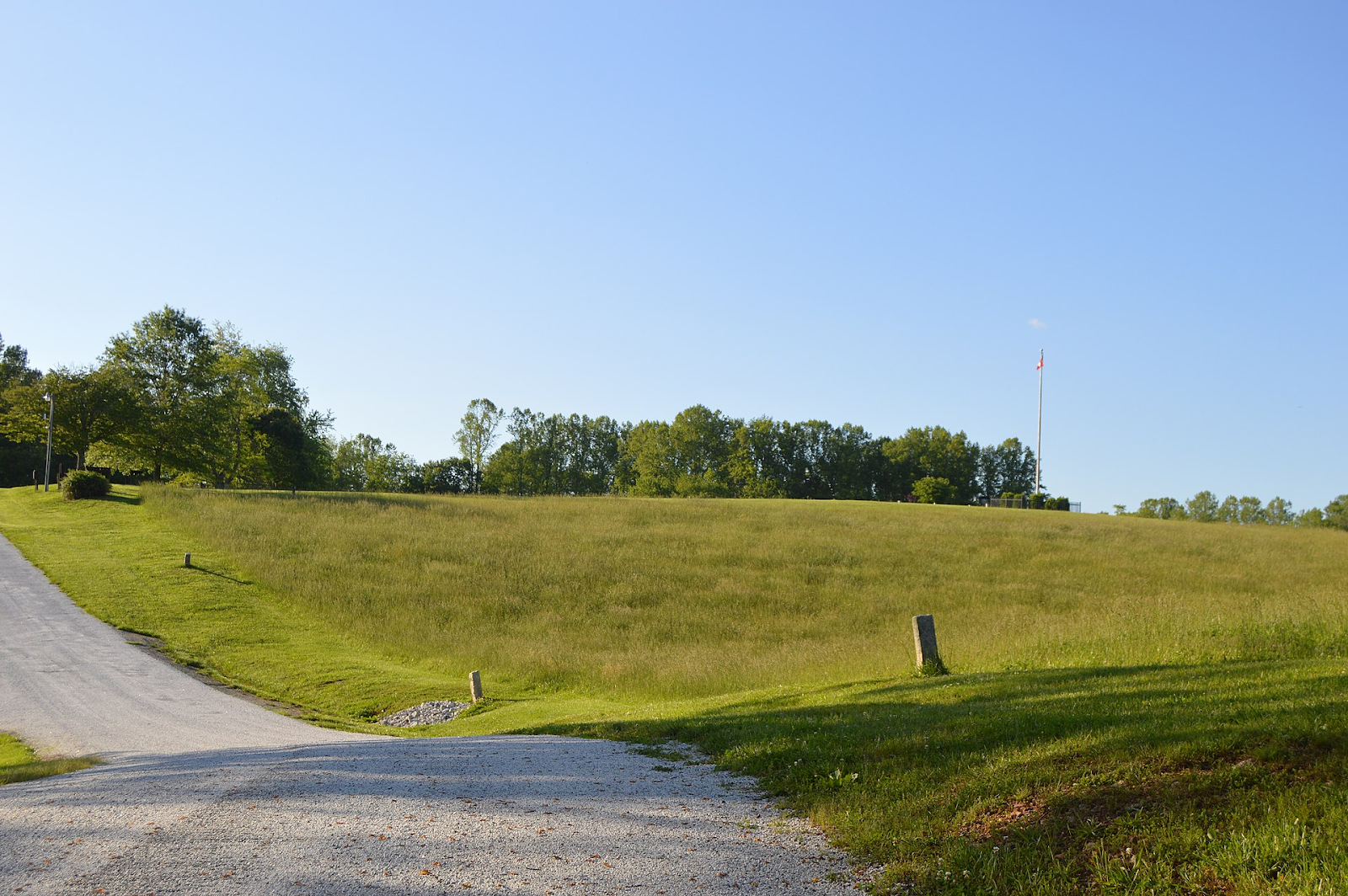



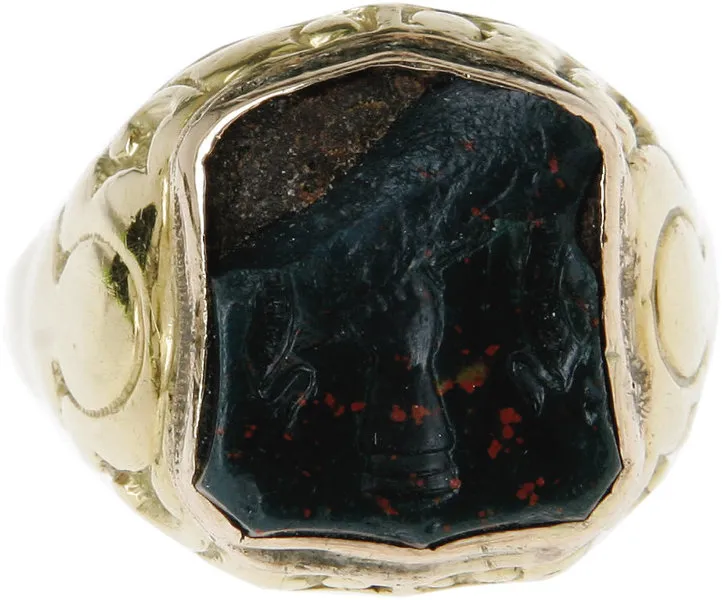


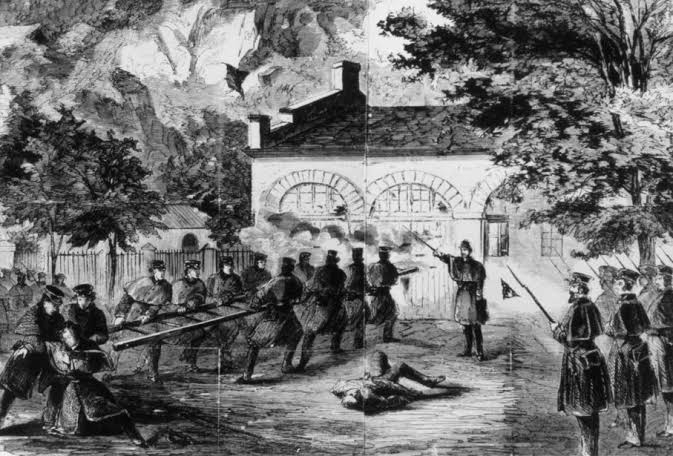
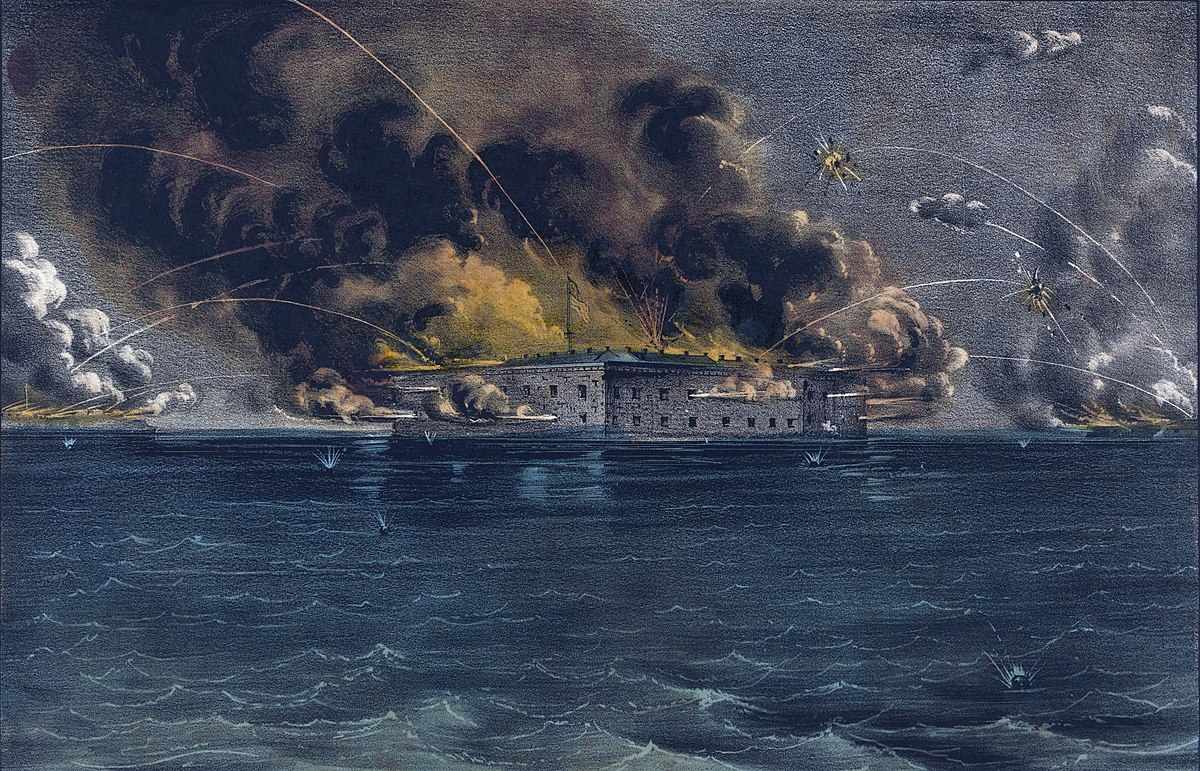












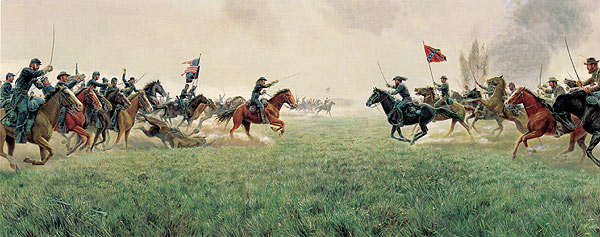


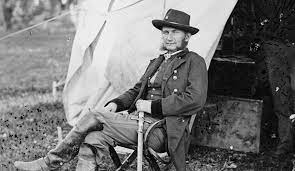


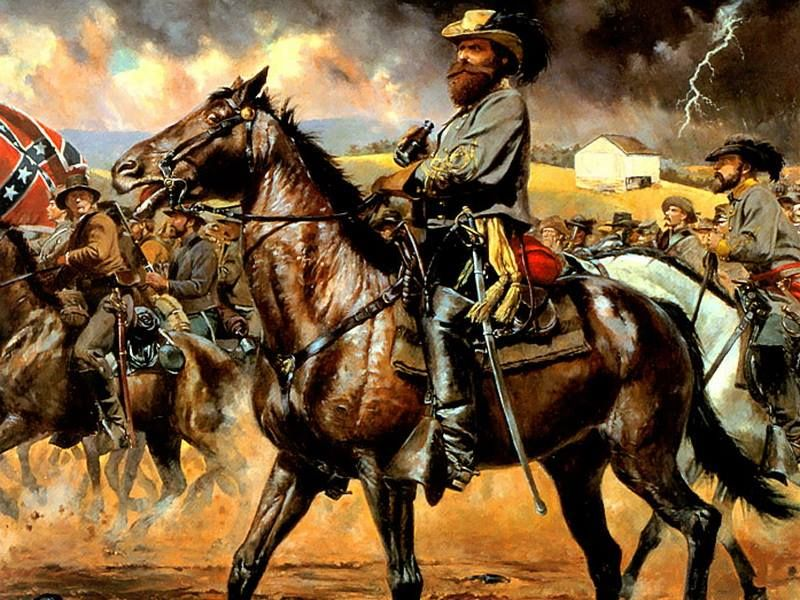

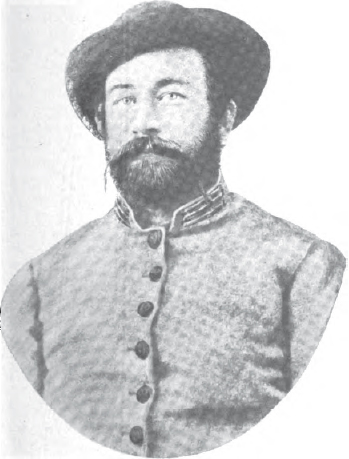


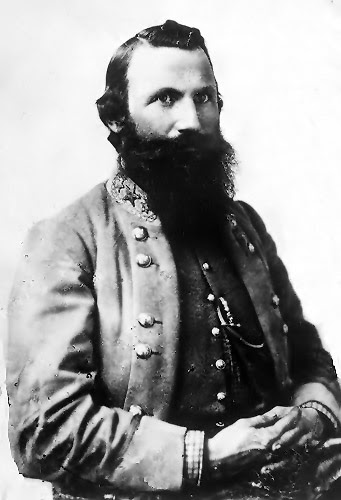


No comments:
Post a Comment